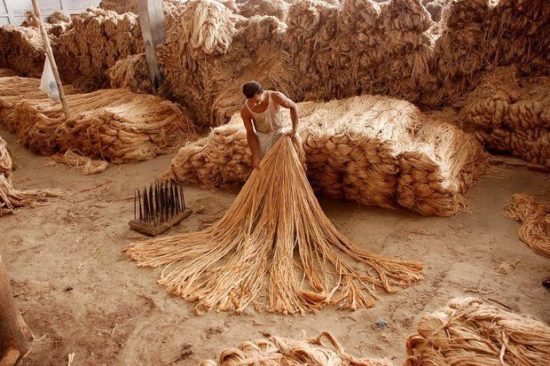Jute Introduction

“Golden Fibre” another term which is utilized to portray Jute. Jute fabric is basically yellowish brown, shiny, natural vegetable fibre. It is produced from the stems of genus Corchorus. If we rank in terms of production and usage, then jute occupies a place next to cotton. Jute is mainly used for agricultural bulk packaging, due to its inherent high tensile strength, modest moisture, low extensibility, retention and better breathability.
For a considerable period of time, jute which is grown in Deltas of Ganga has been an integral part of India and was widely used for apparel as well as non-textile uses. Jute is also known as hessian fibre due to its importance and use in all the parts of the world. Usage of Jute has been decreased in many of its industrial applications, after the advent growth of synthetic fibre in the mid centuries. Although, jute is retrieving its importance based on its sustainable properties. Now, jute is being used for many varied applications and thus it has not yet lost its glitter.
The demand for jute is increasing because of its techno-commercial effective cost as well as its biodegradable and eco-friendly features. The various end-use applications of jute are:
- Apparel – It is best for manufacturing comfortable garments, specially pullovers and intimates, due to its lustre, softness and uniformity
- Home textiles – Not all but most of the people are fond of attractive home furnishings like jute bags, chair coverings, curtains, floor covering mats, and carpets.
- Industrial/Technical – Jute featuring to its long length and tensile strength, it can be widely used in making ropes and twine for industrial use and it can also be used for storage of grains and agricultural products by making baskets and bags.
- Other – It is used as herbs and food in some Middle Eastern and African countries for cooking of soups in, leaves of raw jute are also eaten in parts of India.
The origination of Jute started from the Indian subcontinent with favourable warm and wet climatic conditions for its cultivation. 95% of global Jute production can be accounted from India and Bangladesh.